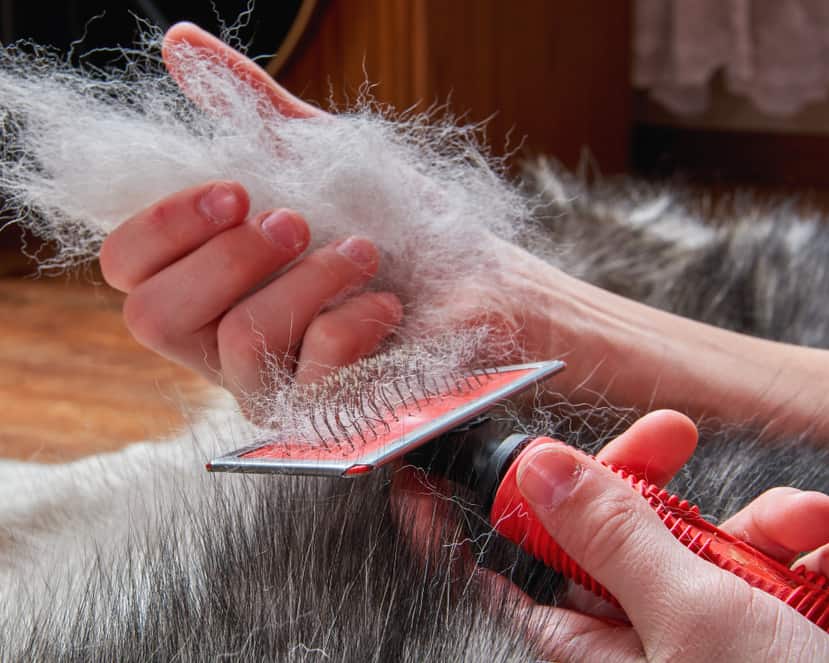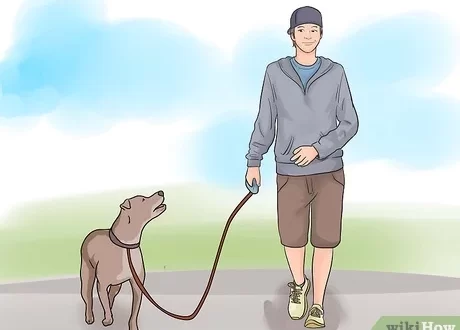
Why a dog’s hair fell out: 5 most common reasons
Alopecia, or hair loss, is a common and noticeable phenomenon in dogs. Hair can fall out in a specific area, in several areas, or throughout the body. If your pet has begun to lose hair, you need to find out the cause and decide whether he needs treatment. Many factors can lead to hair loss, but it is likely that it is caused by one of the five most common causes.

Contents
1. Seasonal shedding
In some cases, the dog’s hair falls out due to normal molting. The dog begins to lose its “outfit” due to aging and wear of individual hairs or with the onset of the warm season, and many pets generally shed all year round. Some breeds, such as Huskies and Labradors, grow a thick undercoat in the winter, which they shed in the spring. Seasonal molting will be less abundant if the pet lives in a temperate climate. But if shedding becomes excessive, it is necessary to comb the dog a couple of times a week to remove and control excess hair.
2. Bacterial and fungal infections
Bacteria and yeast are normal inhabitants of a dog’s skin, but sometimes things can get out of hand and cause an infection. Bacterial or fungal skin infections can cause a dog’s hair to fall out, causing redness, itching, and a bad odor. Sometimes bacterial infections cause pimple-like pustules.
Dogs can also get ringworm, a fungus that causes hair loss and infection in small areas. Red, itchy or scaly patches are a reason to visit your veterinarian. He will perform a complete examination, recommend some tests, and prescribe antibiotics or antifungals if necessary to treat the infection.
3. Scabies and other parasites
Scabies is a catch-all term for skin infections that are itchy and caused by mites. Ticks are microscopic creatures that live on the surface of the skin or in hair follicles. They burrow or bite into the skin, causing hair loss and itching. Some types of mites, such as scabies, are extremely contagious to both humans and other dogs, according to the Merck Veterinary Manual. Other types of mites, such as Demodex, are not always contagious, but still cause hair loss and may require treatment.
Fleas are a very common cause of hair loss in dogs. Sometimes they cause such severe itching that the animal can simply gnaw out hairballs. Ticks and fleas are extremely contagious, so if you find any parasites in your pet, you need to understand that they may have already spread to other pets and household items in the house. A veterinarian can prescribe a fast-acting antiparasitic agent and give advice on getting rid of parasites in the house, if fears are confirmed.

4. Allergy
Dogs, like humans, can suffer from allergies, the most common symptoms of which are itchy skin and hair loss. In dogs, atopy or atopic dermatitis (a reaction to environmental irritants – pollen, mold and dust mites, fleas) and food allergies are distinguished.
If an allergy is suspected by a veterinarian, they may recommend flea control, anti-itch medication, avoiding allergen exposure, or changing food to rule out food allergies.
A food allergy can only be diagnosed by a food trial for at least eight weeks. If the veterinarian prescribes it based on the use of a limited number of ingredients or a hypoallergenic food, from a line of diets for maintaining health for certain pathologies, it is important to ensure that the dog does not eat anything else during this period. A single treat or a stolen piece of chicken can lead to inaccurate results. If the main cause of hair loss is an allergy that is properly treated, the pet’s hair will grow back and the itching will stop.
5. Internal pathologies
If your dog has lost hair all over his body, the problem may be looking inside. The skin is the largest organ in the body and requires a huge amount of nutrients to keep it healthy. If a dog becomes ill, its coat and skin are usually the first to suffer because the body will divert resources from the skin to the internal organs that need help.
Hormonal conditions such as hypothyroidism, adrenal disorders, or growth hormone deficiency can also cause your pet to shed hair. Some dogs may shed hair after spaying due to low testosterone levels. Hair loss can also cause liver disease, kidney disease, and cancer. If your veterinarian suspects that the cause of your dog’s hair loss is internal, they may recommend tests, x-rays, and ultrasounds to determine the cause.
Excessive shedding can also be caused by other pathological conditions: stress, poor nutrition, pregnancy and lactation. If your pet is shedding more than usual, or if he develops bald patches, you need to make an appointment with a veterinarian. The treatment he prescribes will depend on the other medical needs of the animal.
If the dog’s hair falls out, what to do – the veterinarian will tell you. This condition can often be corrected simply by changing food or medications. Trim and brush your dog regularly as needed to detect signs of a problem at an early stage.





